When Should You Stop Watering Your Calgary Lawn?
Reading time: 6 minutesEver considered your Calgary lawn might be getting too much of a good thing? So much so that it’s no longer as good a thing as it should be?
Yep, we’re talking about water. Just like us, our lawns need balance – too much hydration can be just as bad as not enough. So, when is it time to roll up the hose and give your sprinkler a break? Let’s discuss the whens and whys of hitting pause on watering your lawn.
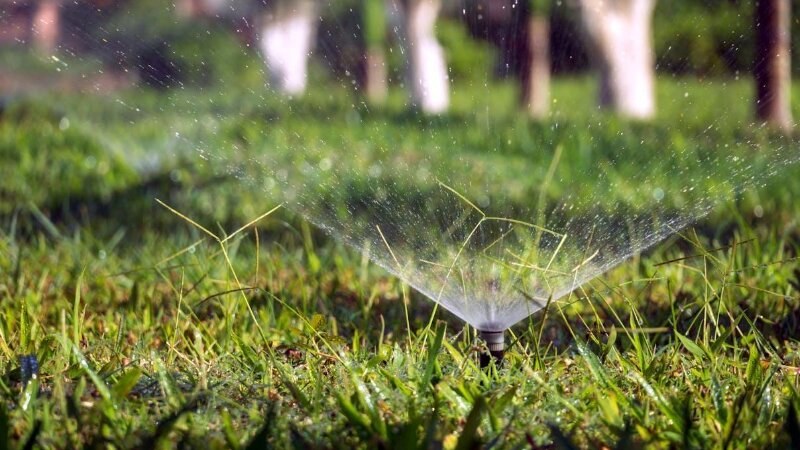
Knowing When to Stop Watering Your Calgary Lawn
1. During Rainy Days
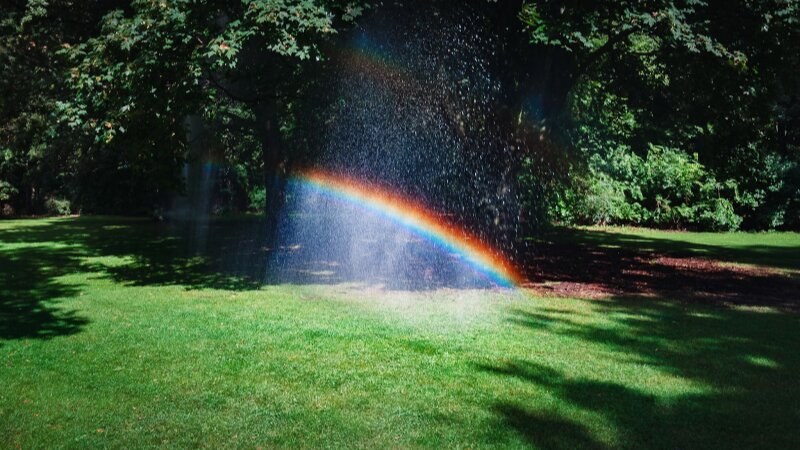
Rainy days can be a boon for your lawn. It offers a natural deep soak that your sprinkler system can only dream of. But before you leave your lawn’s fate entirely to the heavens, keep an eye out on exactly how much water your green space is receiving.
The general rule of thumb: check your soil’s moisture level by digging a small hole in the soil. If the soil is still moist a few inches below the surface, you don’t need to water.
Here are some more points to consider:
- Heavy Rain. If there’s been a significant amount of rain (about 1 inch or more), additional watering isn't necessary and can lead to overwatering, which can cause problems like root rot and fungal growth.
- Consistent Rainfall. During periods of regular rainfall, your lawn is likely getting sufficient water naturally.
You can consider watering when there’s:
- Light Rain. If the rain is light or sporadic and doesn’t provide enough water (less than 1 inch per week), you can water your yard.
- Dry Spells Between Rains. If there are extended dry periods between rain showers, you may need to water your lawn.
So, during the rainy season, adjust your irrigation practices. If the forecast promises steady/heavy rain, give your sprinklers a rest.
2. At The First Frost
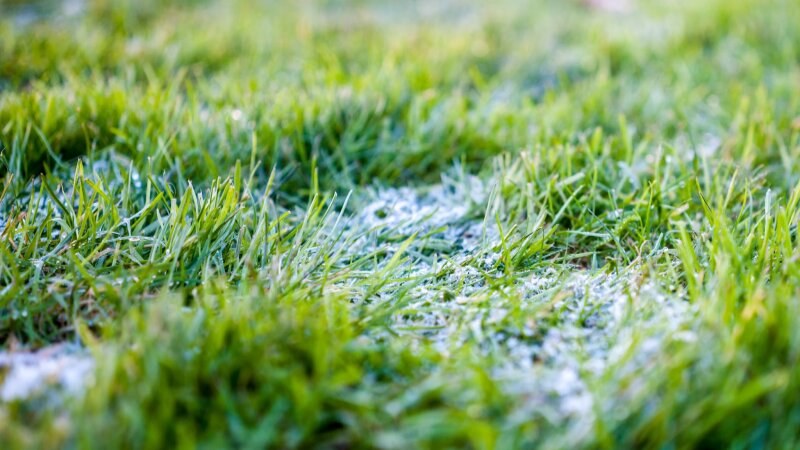
When the mercury dips and the first frost of the season brushes your lawn, it's a clear signal to stop watering. Frost conditions mean that your lawn is entering a dormant phase, where water demand significantly drops as growth slows. Continuing to water in these colder conditions can also lead to ice formation on the grass, which can damage the blades and root system.
Moreover, frost can affect your irrigation systems if they’re not properly winterized. The water remaining in pipes, hoses, and sprinklers can freeze, expanding and potentially cracking your watering infrastructure. This could mean costly repairs come spring.
3. You Notice Pests on Your Lawn
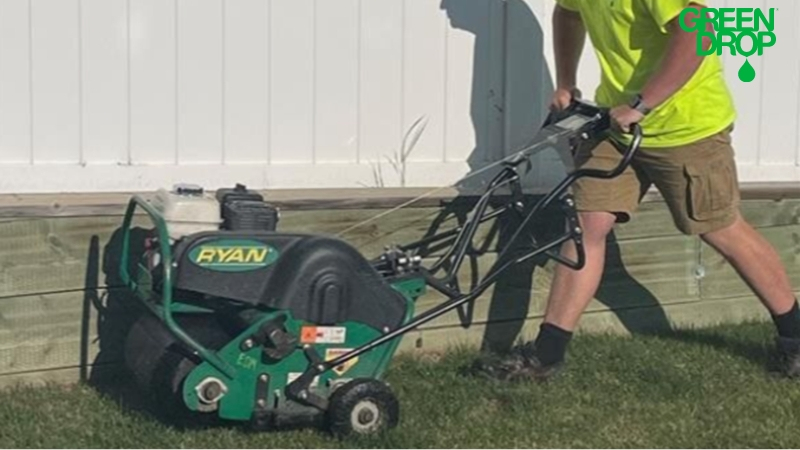
We’re not talking about those helpful insects like bees, earthworms, ladybugs; or beneficial fungi (all of these, in fact, break down thatch and aerate the soil, so your lawn needs this!). We’re talking about those pesky grubs, mosquitoes, and chinch bugs that do nothing but not let you enjoy your outdoor time. Moist, damp conditions are ideal for these pests because they thrive in waterlogged environments. If you see any of these on your lawn, it’s time to give your watering a break.
These pests have probably taken a liking to your yard because of an overwatering problem. To combat these invaders, reduce your watering schedule. Less water means less moisture at the surface and fewer hospitable spots for pests to reproduce. This strategy, however, may need to be complemented by other pest management practices.
The next thing we need to focus on is improving the drainage of your lawn to prevent water accumulation. We want to make sure your lawn isn’t just dry at the surface but also well-drained below. You can do that with the help of regular lawn maintenance, such as aeration.
Aeration improves drainage by reducing soil compaction and allowing nutrients, air, and water to flow more easily. This affects the overall health of your grass, making it less appealing to pests and more resilient against infestations.
4. You See Fungi
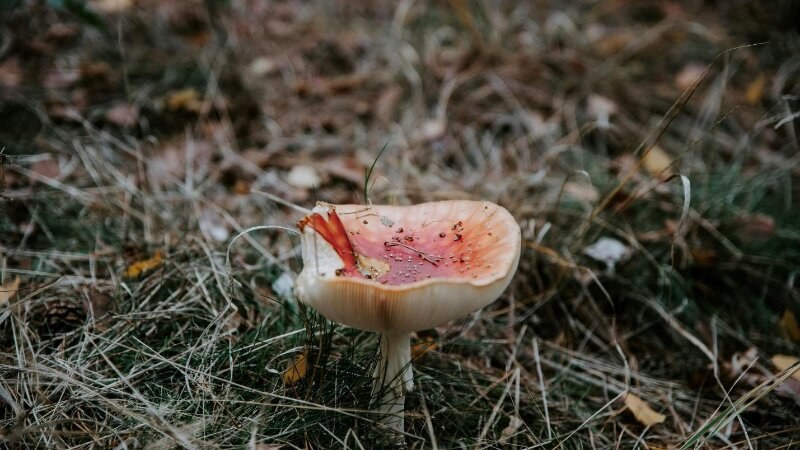
Excessive moisture doesn’t just mean pests; it's also a prime catalyst for fungal growth on your lawn. Fungi thrive in wet conditions, and without proper management, they can quickly turn a healthy lawn into a patchy, discoloured mess.
Recognizing the signs of fungal infection is key to taking early action. Common indicators include irregular patches of discoloured grass, white, yellow, or brown spots on blades, and a general thinning of the lawn.
If you see fungi on your lawn, dial down the watering. Focus on deep infrequent watering, which encourages stronger root growth and reduces surface moisture that fungi need. Again, just like before, it’ll all comes down to good drainage—water should never pool on the surface.
Improving air circulation can also help reduce fungal issues. Regularly raking leaves and debris, and thinning out overgrown areas, allow more air to reach the soil, helping to keep it dry. If fungal problems persist, we may have to consider other control solutions, but always as a last resort and part of a broader lawn care strategy. The goal is to create a robust ecosystem where grass can thrive with minimal intervention.
5. There Are Water Restrictions
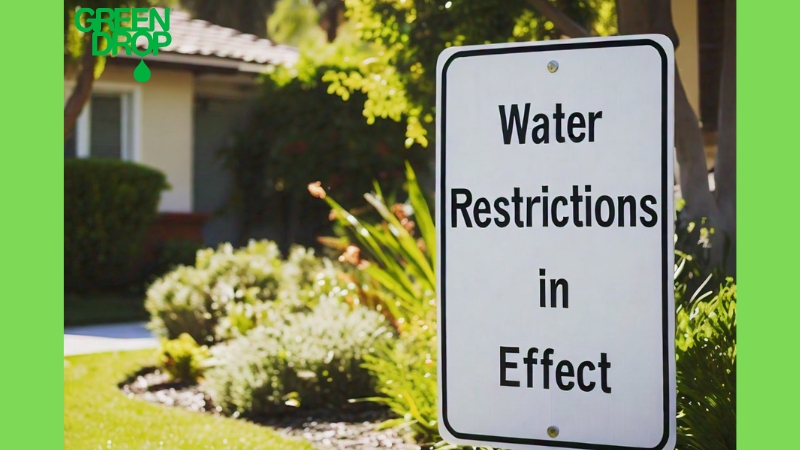
Understanding and adhering to local watering restrictions is crucial to support Alberta’s water conservation efforts. These restrictions are imposed for a reason: to manage water usage during drought conditions or in times of limited water supply. Restrictions will dictate how often you can water (e.g., odd/even days), specify allowable times of day, or set limits on watering duration.
To navigate these rules effectively, consider these ideas:
- When watering is allowed, focus on dry or stressed areas rather than watering the entire lawn.
- Invest in smart irrigation systems that adjust watering based on soil moisture and weather conditions, ensuring your lawn gets just what it needs—no more, no less.
- Check out water-efficient methods like drip irrigation or collecting runoff in rain barrels, which can provide your lawn with necessary hydration without wastage.
- Let grass clippings remain on the lawn as they decompose and help retain moisture.
- Collect rainwater using barrels or other storage systems to use for watering your lawn and garden during dry periods.
- As a long-term strategy, consider planting drought-resistant grass varieties that require less water.
By keeping these in mind, you can maintain a healthy lawn even during water restrictions in Alberta, conserving water and adhering to local regulations.
6. When the Weather Changes

As the seasons change, so do the watering needs of your lawn. Transitioning from the warm summer months into cooler autumn and winter weather means adjusting your lawn care routine.
As temperatures drop, your grass will retain moisture longer due to decreased evaporation rates. This natural retention means you need to cut down the frequency of your watering sessions.
Here's a general guideline on when to stop watering:
- Late September to Early October: Typically, you should stop watering your lawn around late September to early October. This, of course, can vary slightly depending on the weather conditions each year.
- First Frost: Once the first frost occurs, 2–3 days prior, stop watering. This is an indication that your lawn is entering dormancy.
- Weather Patterns: Monitor local weather forecasts and look out for consistently cooler temperatures. You don’t want the chinooks to throw you off. When daytime temperatures stay below 15°C (59°F), and nighttime temperatures drop near or below freezing, it's time to reduce and eventually stop watering.
Additionally, keep a close eye on the health and appearance of your grass. Signs like an overly spongy feel underfoot, a dull green colour, or grass that doesn’t spring back after being stepped on may indicate overwatering.
Dial in Your Lawn Care with Green Drop
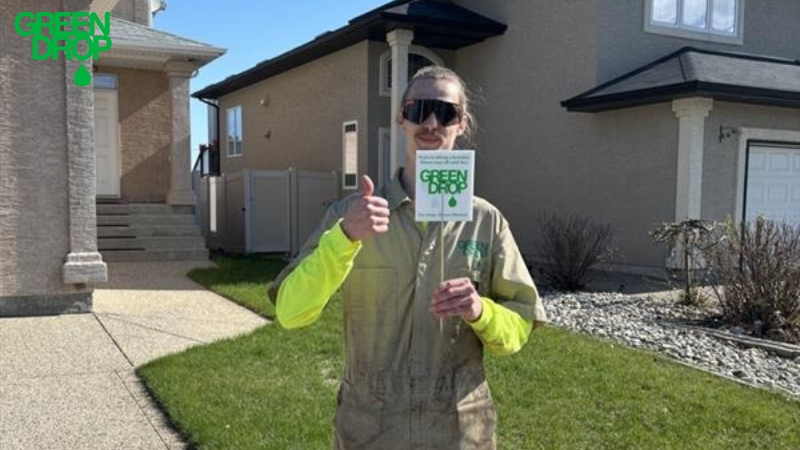
Ensuring your lawn remains lush and healthy doesn't have to be a guessing game. Remember, sometimes, the best action is knowing when to stop watering.
If you're unsure or need a hand, Green Drop is here to help! We offer year-round lawn care services, personalized for your needs.
So, book your beautiful lawn care program today or reach out for a free estimate. It’s our pleasure to service all major cities across Western Canada including Winnipeg, Regina, Red Deer, Edmonton, and Saskatoon, in addition to Calgary.

